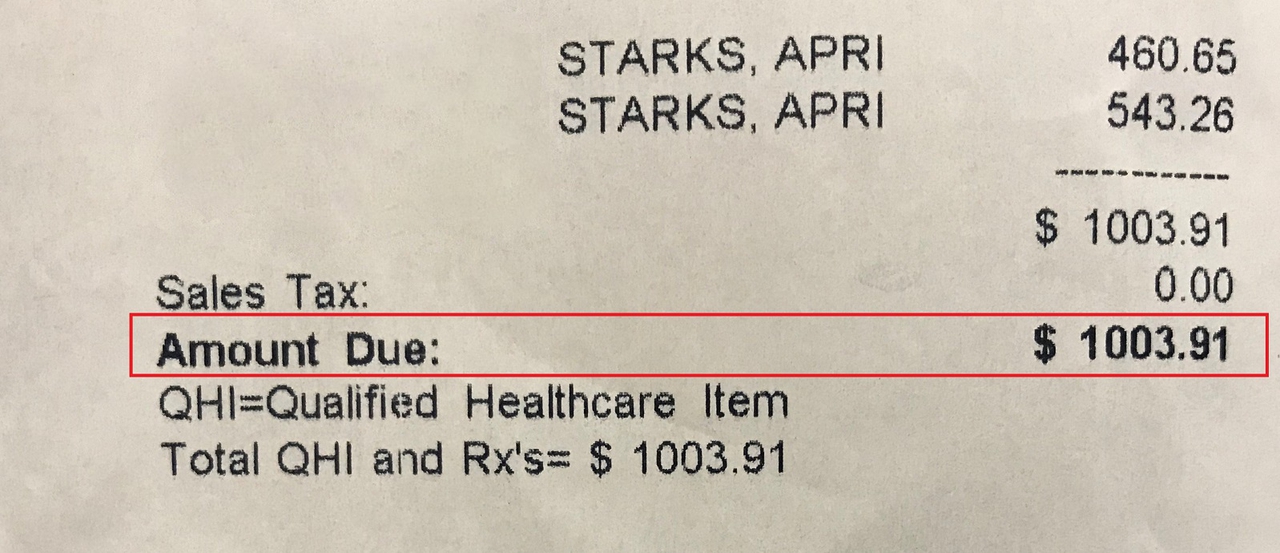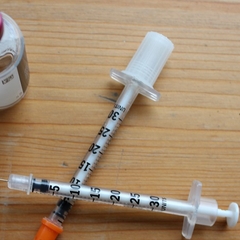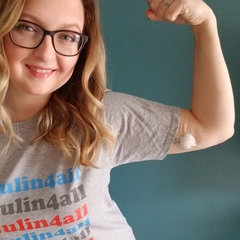
New Year, New Deductible: Paying $1,000 each Month to Stay Alive
15 Mar 2019, 12:41 p.m. in #insulin4all USA, Global Stories by April Starks
I’m thrilled to see the recent buzz in the media concerning the high insulin costs many diabetics face daily in the USA. I’ve required insulin multiple times a day for 33+ years and I have a high deductible insurance policy which means medical costs, including prescriptions, aren't covered until the deductible is met. I paid $1,003.91 for insulin this month. That cost is what I paid with insurance and a $150 discount card. I pay high amounts during the first few months of every year until I meet my deductible.
There’s no simple "fix" to make insulin affordable, and I'm compelled to address some of the "fixes" that have been suggested to me recently.
First of all, the $25 Walmart insulins are old types that have been around for decades and, for many people, they don’t work as well as newer insulins. While I’m thankful those options are available and that people benefit from them, most diabetics wouldn’t be good candidates for switching to those insulins because it could do more harm than good. Additionally, they do not offer a rapid acting insulin compatible with insulin pump therapy.
In terms of patient assistance or prescription assistance programs, in my experience, someone with insurance can't apply for 95% of those programs. If you somehow do qualify despite having insurance, the low gross income limits usually disqualify you. These programs help a few people, but are not a true fix to the high costs of insulin. Discount cards are available, but some cannot be used when paying the cash price or if you’re paying cash because insurance doesn’t cover a specific insulin. Last year my insurance wouldn’t cover Tresiba, so I couldn’t benefit from their $150 discount card. I was caught in this trap both ways - no discount if insurance won’t cover and no discount if paying cash.
Others have suggested GoodRx, which can help those who are uninsured. It’s important to know that GoodRx cannot be used with your insurance. You either pay the insurance price or the GoodRx cash price. If you pay cash, you don’t get credit toward your insurance deductible or out of pocket limit. If you have a high deductible, it’s usually more cost effective to pay the insurance price to help you meet your deductible by year end, so insurance will cover a portion of your costs resulting in a lower out of pocket cost.
Let me break it down based on my experience. GoodRx’s cheapest price for each of my insulins are $338.48 and $612.41 per box. That’s a total of $950.89. Yes that’s $53.02 cheaper than what I paid, but keep in mind that since that’s the cash price, I would not have gotten credit toward my deductible or out of pocket limit if I paid the GoodRx price, and I would continue to pay that amount all year long. If I pay my insurance price, once I meet my $2,750 deductible, I’ll only pay a portion of my insurance’s contracted amount (roughly $200.78), resulting in paying less throughout the year. With insurance, my insulin would cost about $4,609.37 this year. However, when I reach my out of pocket spending limit of $4,250 I do not have to pay more. If I used GoodRx all year and paid cash price it would cost $11,410.68 annually. That’s just for insulin and doesn’t include any additional medical expenses!
For those of us with insurance, there are additional consequences of paying the cash price. Since your deductible isn’t being met, you will continue to pay the full insurance contracted price for any other prescriptions or medical care you receive. That includes other items someone with diabetes needs like test strips, syringes, pen needles, pump supplies, office visits, bloodwork, etc. Not to mention sick visit costs like office visits, labs, X-rays, or prescriptions.
I wouldn’t be able to pay for my insulin before my deductible is met without my Flexible Spending Account (FSA). A FSA is a special account you put money into that you use to pay for certain out-of-pocket health care costs. You don't pay taxes on this money. This means you'll save an amount equal to the taxes you would have paid on the money you set aside. A FSA is pre-funded on January 1 each year, so the entire amount you elected is available when you’re being hit hardest and can provide a way to pay high costs when you need it most.
I do not believe I’ve got it all figured out. I know I don’t. I’m just sharing my experience in hopes it might help others. I know that everyone’s circumstances are different, but I want to show how a cheaper price now could cost more in the long run. When you dig deeper, you'll often find that headlines are not always what they seem when you read the whole story.
I hope this helps someone gain understanding of what the insulin affordability crisis is really like for many diabetics. We not only have to live with the 24/7 burden of managing type 1 diabetes, but we also have to contend with these financial burdens just to stay alive. There are no true solutions or fixes to the high cost of insulin right now, which is why it’s so important that we all keep sharing our stories and using our voices to ensure affordable insulin for everyone.




![Hard Work Pays Off for #insulin4all Chapters [USA Update]](/media/thumbs/53/f9/53f96969ecb5a08163f2dab166c8caf9.jpg)

